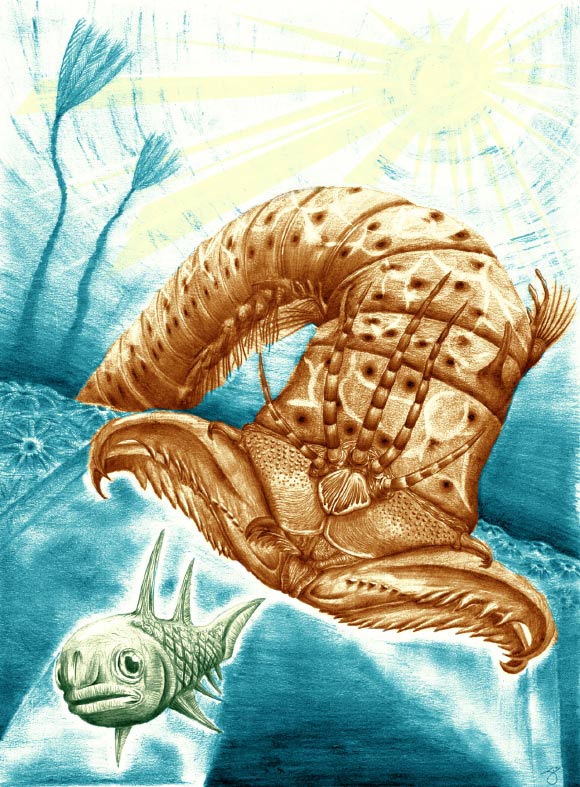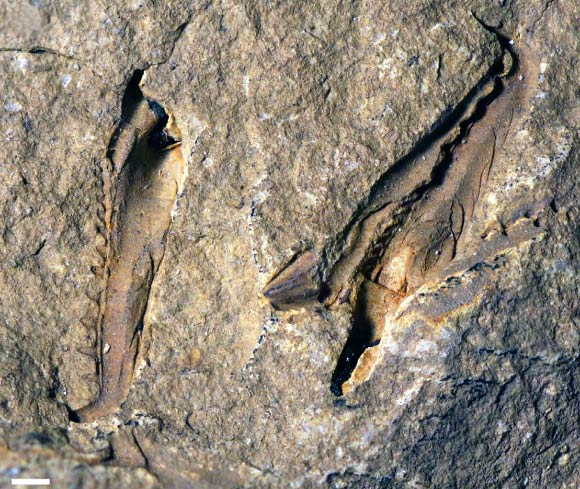A prehistoric monster worm that terrorized the Devonian seas some 400 million years ago has been identified by an international team of paleontologists from the University of Bristol, Lund University and the Royal Ontario Museum.

This is an artistic reconstruction showing Websteroprion armstrongi attacking a fish in the Devonian sea. Image credit: James Ormiston.
The team, led by Lund University Professor Mats Eriksson, studied an ancient fossil, which has been stored at the Royal Ontario Museum in Toronto since the 1990s, and discovered the remains of the extinct bristle worm.
“The study material is of Early-Middle Devonian age and derives from the Kwataboahegan Formation, Hudson Bay Basin, Ontario, Canada,” Prof. Eriksson and co-authors explained.
“The material is housed in the Invertebrate Palaeontology Section, Department of Natural History at the Royal Ontario Museum.”
The new species, Websteroprion armstrongi, is unique among fossil worms and possessed the largest jaws ever recorded in this type of creature, reaching over 1 cm (0.4 inches) in length and easily visible to the naked eye.
Typically, such fossil jaws are 0.1-2 mm in size and need to be studied using microscopes.
Total body length of Websteroprion armstrongi is estimated to have reached over 1 m (3.3 feet), which is comparable to that of extant ‘giant eunicid’ species colloquially referred to as Bobbit worms (these worms are fearsome and opportunistic ambush predators, using their powerful jaws to capture prey such as fish and cephalopods and dragging them into their burrows).

This is a photograph showing the holotype of Websteroprion armstrongi. Scale bar – 1 mm. Image credit: Luke Parry.
“Gigantism in animals is an alluring and ecologically important trait, usually associated with advantages and competitive dominance,” Prof. Eriksson said.
“It is, however, a poorly understood phenomenon among marine worms and has never before been demonstrated in a fossil species.”
“Websteroprion armstrongi demonstrates a unique case of polychaete gigantism in the Paleozoic, some 400 million years ago.”
“It also shows that gigantism in jaw-bearing polychaetes was restricted to one particular evolutionary clade within the Eunicida and has evolved many times in different species,” added team member Dr. Luke Parry, from the University of Bristol.
A detailed description of the ancient worm appears in the Feb. 21 online edition of the journal Scientific Reports.
_____
Mats E. Eriksson et al. 2017. Earth’s oldest ‘Bobbit worm’ — gigantism in a Devonian eunicidan polychaete. Scientific Reports 7, article number: 43061; doi: 10.1038/srep43061







